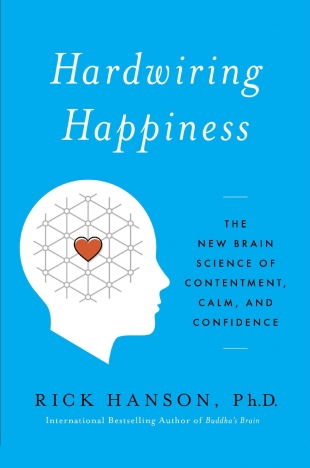Rick Hanson is a neuropsychologist and author of Buddha's Brain, Just One Thing, and several audio programs. He is founder of the Wellspring Institute for Neuroscience and Contemplative Wisdom and an Affiliate of the Greater Good Science Center at UC Berkeley. Visit www.RichHanson.net for valuable tools, practices, videos, and information about his popular newsletter "Just One Thing."
Growing Good
Hanson begins this New York Times bestselling book with a quotation from the Dhammapada 9.122:
"Think not lightly of good, saying, "It will not come to me."
Drop by drop is the water pot filled.
Likewise, the wise one, gathering it little by little,
fills oneself with good."
Neuroscientists have learned that the brain is set up to be changed by our experiences. Day by day our mind is building our brain. If we are obsessed with stress, worry, and losses, the brain will be shaped by these negative forces. If we "reset our minds" on good events, pleasant feelings, and uplifting thoughts, the brain will be shaped by these positive inputs.
This process is what Jeffrey Schwartz has called "self-directed neuroplasticity." So the challenge for all of us is to take in the good by "activating a positive experience and installing it in your brain."
The Negativity Bias of the Brain
Hanson explains that in order to survive and pass on their genes, our ancestors over the long stretch of time had to constantly be on the alert for dangers, conflicts, and losses. So the brain evolved a "negativity bias that looks for bad news." Or, as the author cleverly puts it, "The brain is like Velcro for negative experiences but Teflon for positive ones."
Stress and Bringing Chasing to an End
Hanson looks at the three operating systems of the brain and the modern symptom of reactive stress which drains bodily resources and brings on "a kind of chronic inner homelessness." The alternative is "the deliberate internalization of positive experiences in implicit memory." His HEAL Method has four steps:
1. Have a positive experience.
2. Enrich it.
3. Absorb it.
4. Link positive and negative material.
This process of taking in the good isn't about seeking pleasure or avoiding pain; it's about bringing the chase of stress to an end: "When you get good experiences into your brain — when you build up the sense of being already peaceful, contented, and loved — your well-being become increasingly unconditional, less dependent on external conditions."
Taking in the good is a gift to yourself and a door way to contentment.
Practicing Taking in the Good
Hanson suggests that each morning you should pick one good fact that you're going to bring into being that day. Beginning the day with a positive state of mind is in your best interest.
Here are some of the arenas where we can create a positive experience: in the past, in your current setting, in sharing the good with others, seeing the good in others, finding the good in the bad, sharing the good with others, seeing life as opportunity, imagining the future, being caring.
Brain Building
Not only can taking in the good be activated by a variety of experiences, it can be heightened and enriched by sinking into the positive experience and letting it become as intense as possible. You can do this by trying to sense it with your whole body; emphasizing the freshness and novelty of the experience; making sure your experience matters, and looking for its personal relevance. Hanson also includes some strategies for changing negative material into positive experiences.
Good Uses
Hanson states that there is a "return on investment" in positive mental states: filling the hole in your heart, lifting a blue mood, recovering from a trauma, feeding relationships, and helping others, including children. He also shows how dealing with blocks to taking in the good can strengthen your resolve to carry on.
Jewels for the Treasure Chest of the Heart
The author concludes with guided practices to weave into your brain in order to grow key strengths inside yourself. They build upon our three core needs for safety, satisfaction and connection. A few of them are relaxation, peace, pleasure, gratitude and gladness, enthusiasm, contentment, feeling valued, compassion, kindness, and love.
A Blend of Spirituality and Neurology
Hardwiring Happiness is a new classic in transformation practices with its salutary affirmation of the mind's positive impact on the brain and the important role of growing goodness in our lives. Rick Hanson is to be commended for his pioneering work in accenting the blending of spirituality and neurology.
